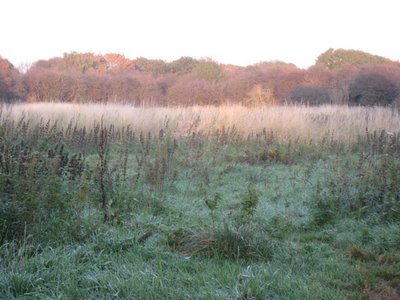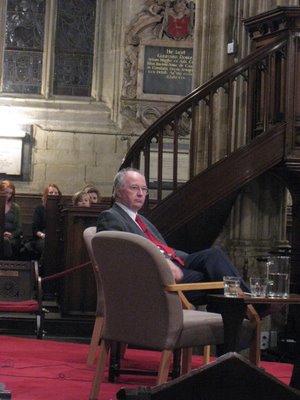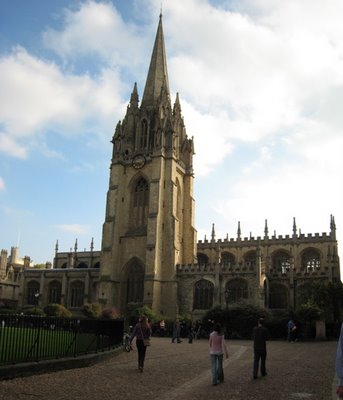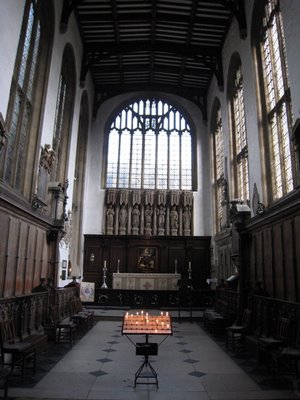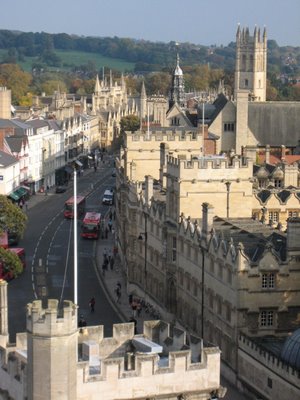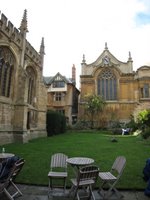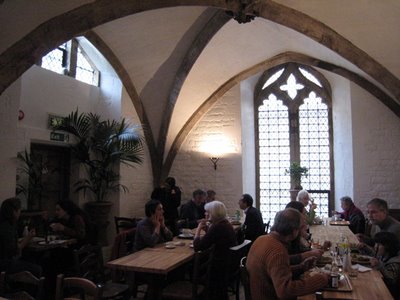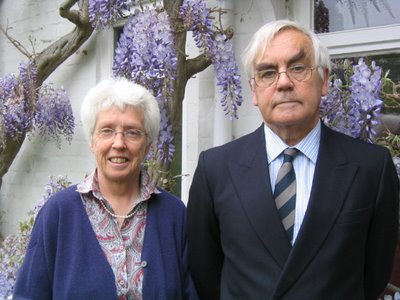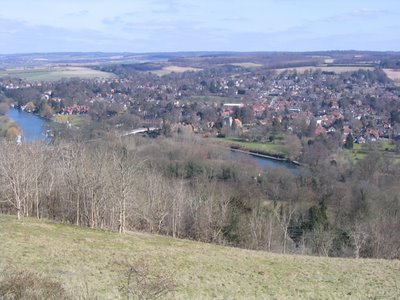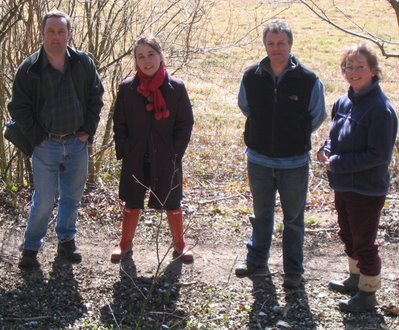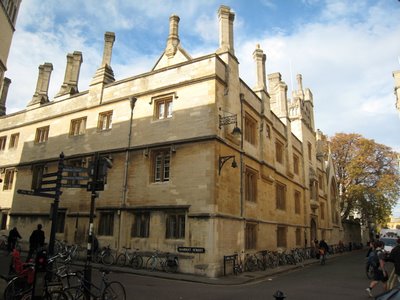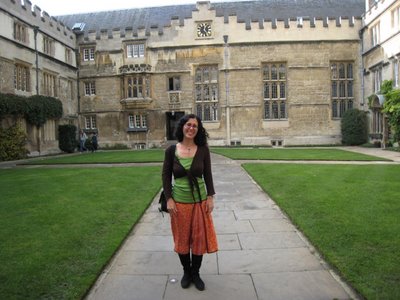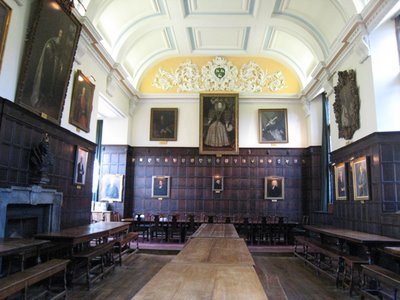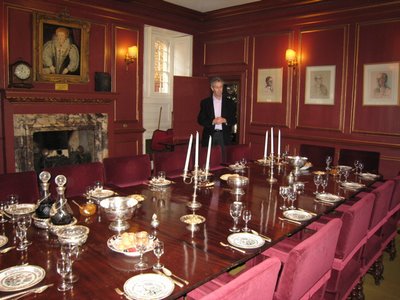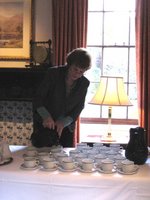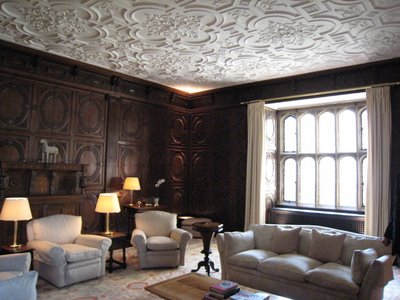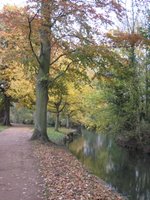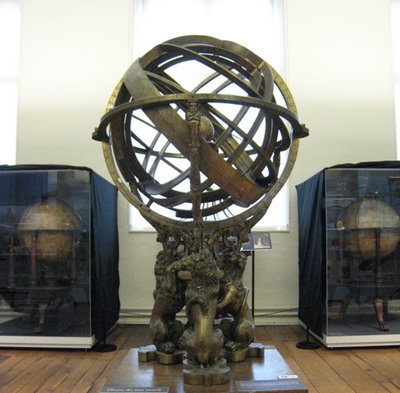 One step into the Museum of the History of Science and I had entered Philip Pullman’s fantasy world of His Dark Materials. The Oxford author had clearly found inspiration for Lyra’s magical alethiometer (the golden compass) in the museum’s collections of astrolabes and sundials. The 1590’s armillary sphere (pictured above) was owned by Henry Percy, the ninth Earl of Northumberland. He was known as the “Wizard Earl.” The globes had astrological signs on them.
One step into the Museum of the History of Science and I had entered Philip Pullman’s fantasy world of His Dark Materials. The Oxford author had clearly found inspiration for Lyra’s magical alethiometer (the golden compass) in the museum’s collections of astrolabes and sundials. The 1590’s armillary sphere (pictured above) was owned by Henry Percy, the ninth Earl of Northumberland. He was known as the “Wizard Earl.” The globes had astrological signs on them.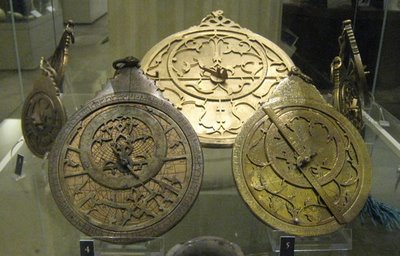
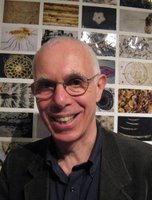 Director Jim Bennett explained that this was not a museum of modern science but rather “the finest collection of early instruments in the world.” The Persian astrolabes (above) dated from the 15th to the 18th centuries. There were other artifacts from the 11th century and many from the Renaissance. The instruments were called “mathematical” as the science focused on measuring distance and time in relation to the stars and planets for surveying and navigation.
Director Jim Bennett explained that this was not a museum of modern science but rather “the finest collection of early instruments in the world.” The Persian astrolabes (above) dated from the 15th to the 18th centuries. There were other artifacts from the 11th century and many from the Renaissance. The instruments were called “mathematical” as the science focused on measuring distance and time in relation to the stars and planets for surveying and navigation. 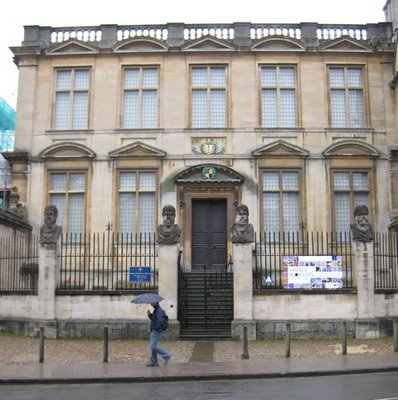 Originally known as the Ashmolean, it was the first building ever constructed for the purpose of being a museum. It was completed in 1685 to embrace the new science in the university. The method of teaching was experiment and demonstration, a departure from the traditional reading of lectures. Like an allegory, the basement originally housed the chemical laboratories, the ground floor was devoted to the study of natural history and the top floor was the museum.
Originally known as the Ashmolean, it was the first building ever constructed for the purpose of being a museum. It was completed in 1685 to embrace the new science in the university. The method of teaching was experiment and demonstration, a departure from the traditional reading of lectures. Like an allegory, the basement originally housed the chemical laboratories, the ground floor was devoted to the study of natural history and the top floor was the museum. The new science museum was truly public from its conception. The six pence admission meant that few commoners could afford to visit, but those who could pay, including women, were welcome. What a radical concept for the 17th century! Some of the elite boycotted the museum for this reason.
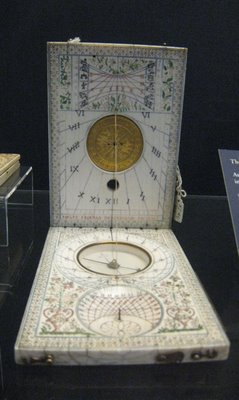 I was surprised to see so many sundials during the period that clocks and pocket watches were gaining popularity. Dr. Bennett explained that clocks, which measure average solar time, had to be set off sundials. Interestingly, the sundials were a far more accurate measurement of time. Some were small enough to carry in a pocket and made additional measurements such as Babylonian time. Bennett compared them to the silly extra features on digital watches. Technology may have changed, but human nature has not. It’s all about the cool gadgets.
I was surprised to see so many sundials during the period that clocks and pocket watches were gaining popularity. Dr. Bennett explained that clocks, which measure average solar time, had to be set off sundials. Interestingly, the sundials were a far more accurate measurement of time. Some were small enough to carry in a pocket and made additional measurements such as Babylonian time. Bennett compared them to the silly extra features on digital watches. Technology may have changed, but human nature has not. It’s all about the cool gadgets.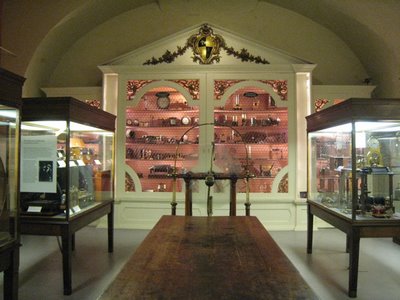 These days the entire building is devoted to the museum. The basement now houses the more modern collection, including its most famous object: a blackboard used by Einstein to show his cosmological equations. There is also the first wireless machine used to broadcast soprano Nellie Melba in 1920. An historic event included in the book my husband is writing on public television. Demonstrations of the ancient instruments are given at the table. I’d love to bring our engineer-inclined son back for an astrolabe or sundial demonstration.
These days the entire building is devoted to the museum. The basement now houses the more modern collection, including its most famous object: a blackboard used by Einstein to show his cosmological equations. There is also the first wireless machine used to broadcast soprano Nellie Melba in 1920. An historic event included in the book my husband is writing on public television. Demonstrations of the ancient instruments are given at the table. I’d love to bring our engineer-inclined son back for an astrolabe or sundial demonstration.My tour was arranged by the Oxford Newcomers' Club, and it was a fine way to spend a cold, wet morning. The leaves are mostly down, but the grass is still bright green and will be all winter. I miss snow. Perhaps that explains why the novel I started reading yesterday was Vendela Vida’s Let the Northern Lights Erase Your Name. Maybe I’m just pining after my own winter’s tale, S.A.D., which is with a reader now. S.A.D. is also about teaching science. Have you ever felt homesick for a novel?
